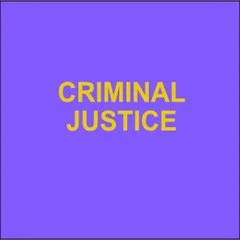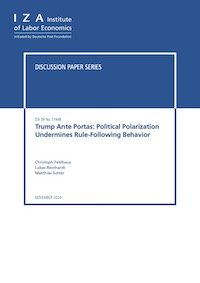By The U.S. Department of Justice, Office of the Inspector General
In the aftermath of the riot and breach of the U.S. Capitol on January 6, 2021, among the questions that were raised was how the breach had occurred and what was known by federal law enforcement in advance of January 6 about the possibility of a violent protest that day. On January 15, 2021, the Department of Justice (Department or DOJ) Office of the Inspector General (OIG) announced its review to examine the role and activity of DOJ and its components in preparing for and responding to the events at the U.S. Capitol on January 6, 2021. Separately, the Federal Bureau of Investigation (FBI) and Department prosecutors immediately began criminally investigating individuals who violated federal law in connection with the riot at the U.S. Capitol on January 6. The Department—through the U.S. Attorney’s Office (USAO) for the District of Columbia (DC)— has reported that it has brought charges against over 1,500 individuals and described the January 6 investigations and prosecutions as having “moved forward at an unprecedented speed and scale.” In the public announcement of our review of the events at the U.S. Capitol on January 6, 2021, we took note of these ongoing criminal prosecutions, stating that the OIG was “mindful of the sensitive nature of the ongoing criminal investigations and prosecutions related to the events of January 6. Consistent with longstanding OIG practice, in conducting this review, the DOJ OIG will take care to ensure that the review does not interfere with these investigations or prosecutions.” As is customary for the OIG, we coordinated closely with the Department and the DC USAO to ensure that the OIG’s investigative work did not conflict with or compromise any ongoing criminal investigation or prosecution. To that end, and consistent with OIG practice, in spring 2022 the OIG paused aspects of our review. 1 Once the OIG determined last year, after consultation with federal prosecutors, that our review would no longer potentially interfere with pending prosecutions, we resumed our review. In doing so, we were cognizant of the amount of time that had passed in deference to the ongoing criminal investigations and prosecutions, as well as the number of other non-DOJ OIG oversight reports that have since been publicly released regarding the January 6 events, and we therefore decided to largely focus our inquiry on an issue that has not yet been thoroughly reviewed in oversight conducted by other entities, namely the FBI’s direction and handling of its confidential human sources (CHS) in the lead-up to and on January 6, and whether the FBI exploited its CHSs and other available information to determine the nature of threats in advance of the electoral vote certification on January 6. In addition to the DOJ OIG’s oversight efforts reflected in this report, several other Inspectors General have conducted reviews of their agency’s actions in connection with the events of January 6: The U.S. Capitol Police (USCP) OIG immediately began a review to determine if the USCP, which is responsible for policing the Capitol Complex, (1) established adequate measures for ensuring the safety and security of the Capitol Complex as well as Members of Congress, (2) established adequate internal controls and processes for ensuring compliance with Department policies, and (3) complied with applicable policies and procedures as well as applicable laws and regulations. The Department of Defense (DoD) OIG initiated a review of the relevant events leading up to January 6, including the DoD’s review and approval of the DC government’s request for assistance from the DC National Guard; DoD’s coordination with DC and federal officials in preparation for January 6; DoD’s receipt and approval of the USCP’s request for assistance on January 6; and the planning involved for National Guard forces to help secure the Capitol in the immediate aftermath of the riot. The Department of Homeland Security (DHS) OIG began a review to examine the role and activity of DHS and its components in preparing for and responding to the events of January 6, 2021, including DHS’s Office of Intelligence & Analysis’s responsibility for providing intelligence to law enforcement and DHS law enforcement components’ roles, responsibilities, and actions on January 6. The U.S. Secret Service (USSS), which was responsible for protecting then Vice President Mike Pence on January 6 during his time at the U.S. Capitol, is a law enforcement component within DHS. In addition, DHS is responsible for designating an event as a national special security event (NSSE) or as a Special Event Assessment Rating (SEAR) event, which it did not do for the electoral vote certification on January 6. 2 The FBI defines a special event as a “significant international event or a domestic event” formally designated as an NSSE event or a SEAR event, which requires the FBI “to plan, coordinate, develop, or provide FBI resources to mitigate potential threats the special event may cause to national security or threats of significant criminal activity that the FBI is responsible for identifying, preventing, investigating, or disrupting.” The Department of Interior (DOI) OIG initiated a review of the actions of the National Park Service (NPS) and the U.S. Park Police (USPP) in preparing for and responding to the events at the Ellipse and the Capitol on January 6 and in information-sharing between the NPS, the USPP, and their law enforcement partners. The demonstration that preceded the violence at the Capitol occurred at the Ellipse, which is part of President’s Park—a national park under the control of the NPS. The USPP is a unit of the NPS authorized to conduct law enforcement in the national park system and, pursuant to local statutes, within DC generally. A further oversight effort was undertaken by the Government Accountability Office (GAO), at the request of Congress, which announced that it would conduct “a comprehensive overview of events leading up to, during, and following the January 6 attack.” The U.S. Senate and the U.S. House of Representatives also conducted oversight regarding the events of January 6. The Senate Committee on Homeland Security and Governmental Affairs (HSGAC) together with the Senate Committee on Rules and Administration (RAC) announced a joint investigation on January 8, 2021, to “examine the intelligence and security failures” that led to the events of January 6. On January 12, 2021, the House of Representatives and Senate leadership were briefed by senior FBI officials about the FBI’s posture leading up to January 6, its response and investigation into the events of January 6, and the threat picture and operational posture leading into the Inauguration on January 20, 2021. Subsequently, numerous congressional committee hearings addressed how various federal agencies prepared in advance of the January 6 Electoral Certification and how they responded on January 6, with the first one being held by the House of Representatives Appropriations Committee on January 26, 2021. In early March 2021, HSGAC/RAC jointly held an oversight hearing that included testimony from the FBI, Hearing Examining the January 6 Attack on the U.S. Capitol, Part II, as well as from non-FBI witnesses. On June 30, 2021, the House of Representatives established a 13-member Select Committee to investigate the rioting and breaching of the Capitol on January 6, named the “House Select Committee to Investigate the January 6th Attack on the United States Capitol” (House Select Committee). The House Select Committee held 10 televised hearings beginning on June 9, 2022, and concluded the last hearing on December 19, 2022.
Washington, DC: U.S. Department of Justice, Office of the Inspector General, 2024. 88p.





















